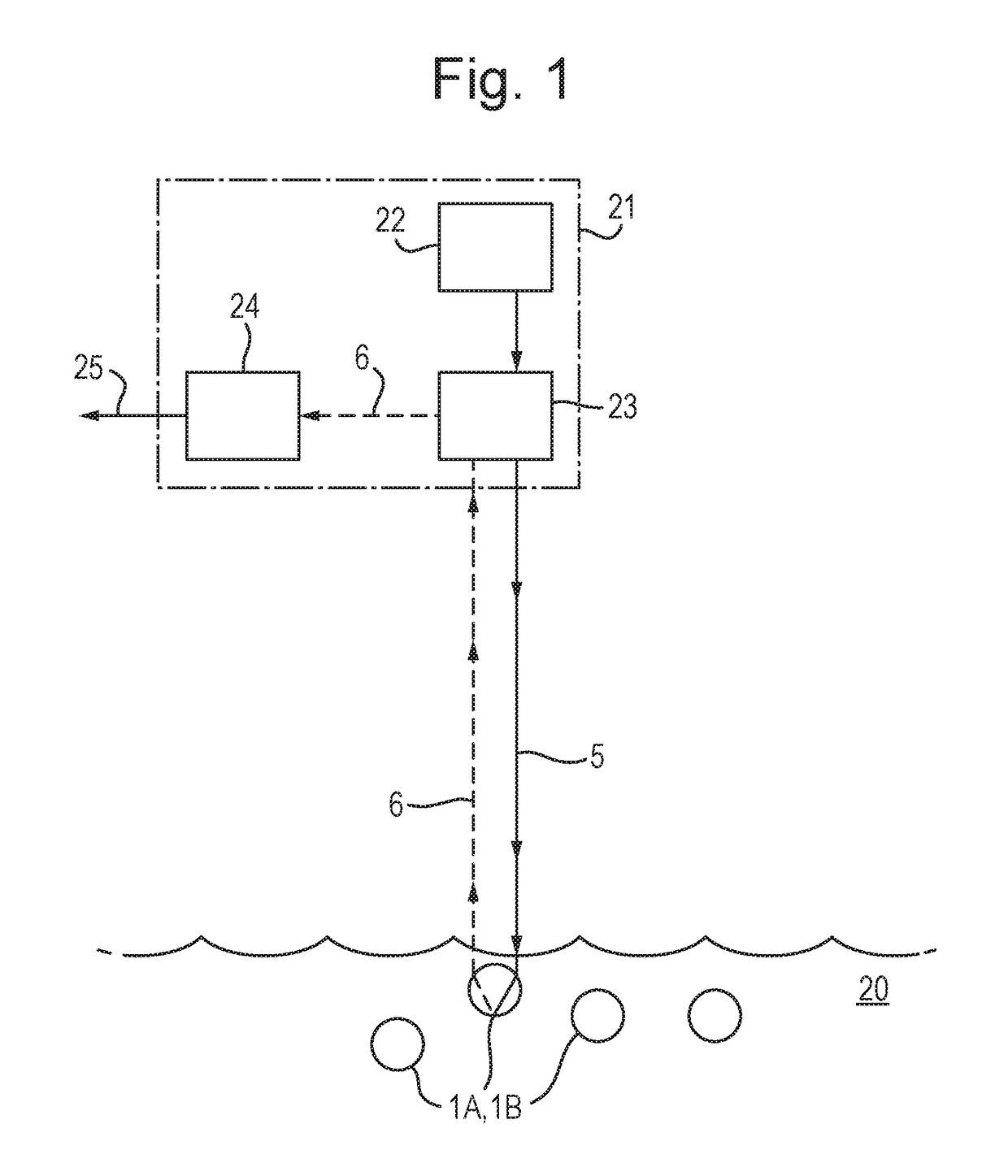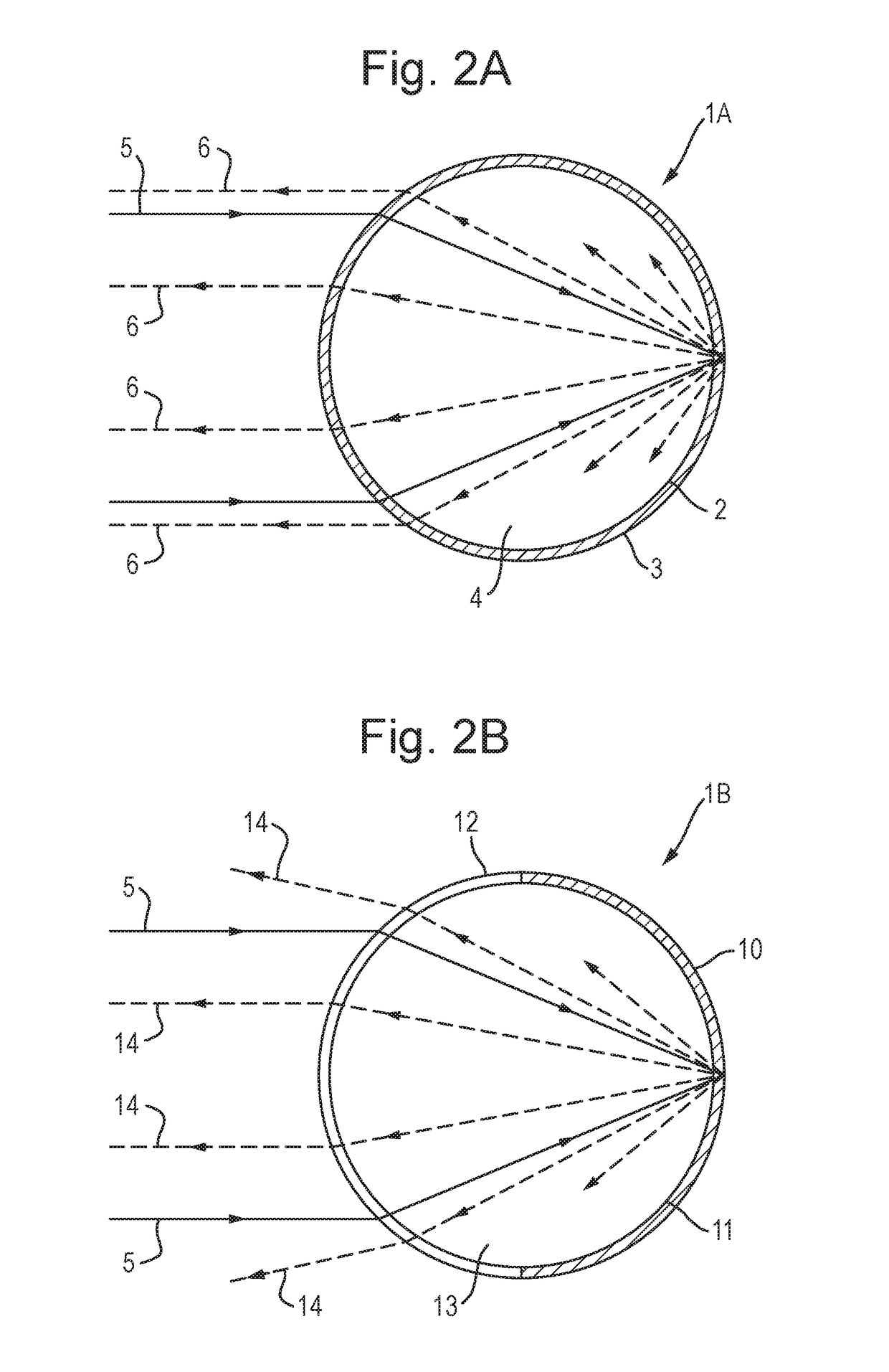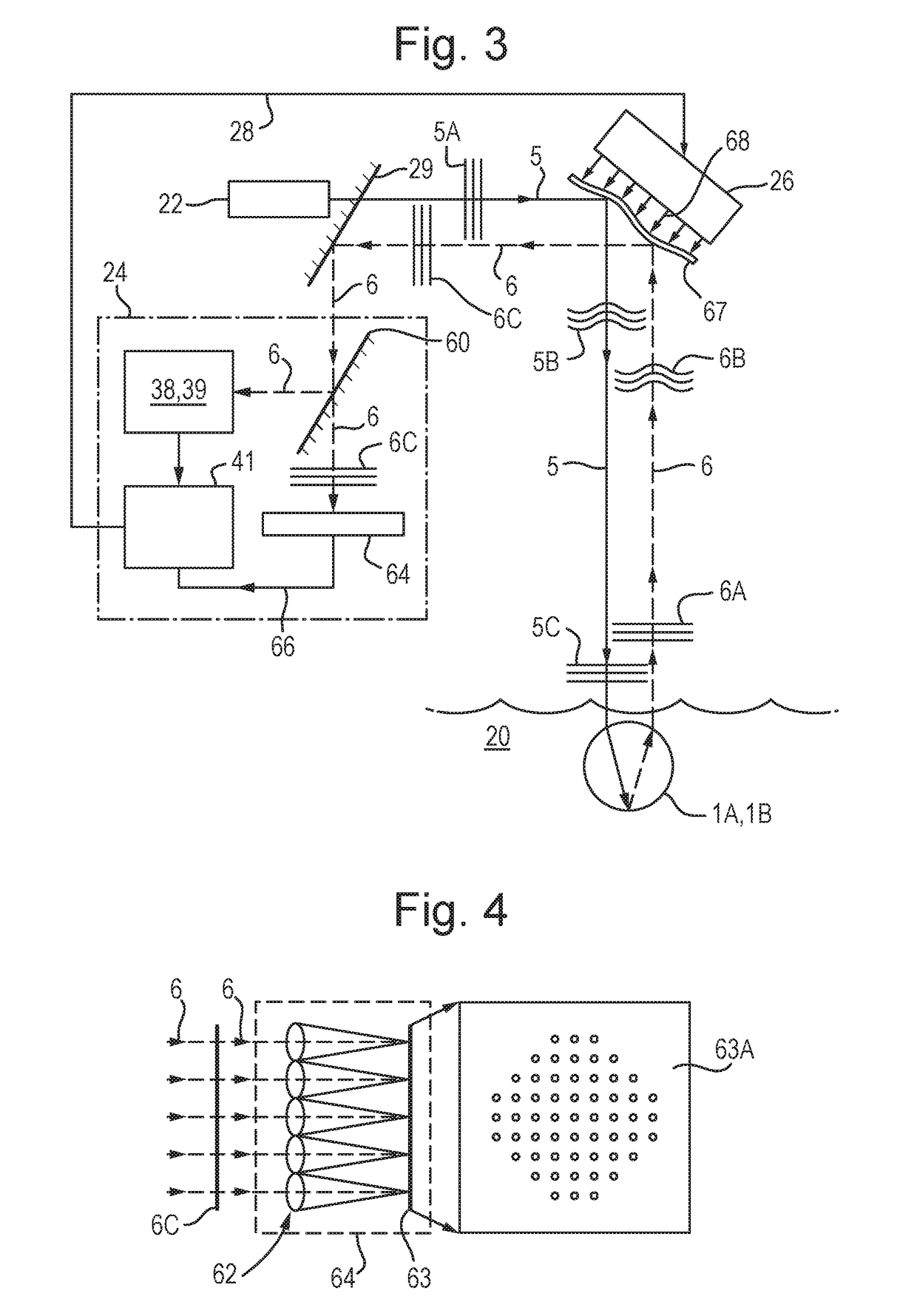Improvements in and relating to remote sensing
a remote sensing and light technology, applied in the field of remote sensing systems and methods, can solve the problems of difficult environment limited use of raman lidar methods, and limited use of raman techniques, so as to improve the amount of light, improve the effect of staying, and reduce aberrations in images formed
- Summary
- Abstract
- Description
- Claims
- Application Information
AI Technical Summary
Benefits of technology
Problems solved by technology
Method used
Image
Examples
Embodiment Construction
[0059]In the drawings, like items are assigned like reference symbols.
[0060]FIG. 1 schematically illustrates a system for remotely sensing light 6 emanating from within a monitored environment 20 (e.g. the open sea in this case). The system includes a plurality of retro-reflective optical elements (See FIGS. 2A and 2B: items 1A, 1B) comprising photo-luminescent coated glass beads structured in accordance with a bead as described below with reference to either one of FIGS. 2A and 2B. The optical elements are positioned within the monitored environment 20 and float at or beneath the water surface of that environment. Typically, about one bead per cubic metre of volume observed (e.g. ocean water, or the atmosphere in other applications) is suitable, or one bead per metre of height / depth of the space being observed.
[0061]A monitoring unit 21 is located above the water surface of the monitored environment and comprises a laser light source 22 arranged to output a beam of light of wavelen...
PUM
 Login to View More
Login to View More Abstract
Description
Claims
Application Information
 Login to View More
Login to View More - R&D
- Intellectual Property
- Life Sciences
- Materials
- Tech Scout
- Unparalleled Data Quality
- Higher Quality Content
- 60% Fewer Hallucinations
Browse by: Latest US Patents, China's latest patents, Technical Efficacy Thesaurus, Application Domain, Technology Topic, Popular Technical Reports.
© 2025 PatSnap. All rights reserved.Legal|Privacy policy|Modern Slavery Act Transparency Statement|Sitemap|About US| Contact US: help@patsnap.com



